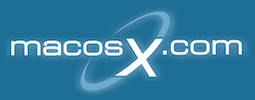Pierce Butler
Registered
To keep using certain legacy software, I've been running my iMac9,1 (mid-2009) computer from an external USB-2 hard drive under MacOSX 10.6.8 (Snow Leopard). All went well until recently, when the volume in question (and a backup on a separate drive) stopped working as a boot disk - it doesn't show up as an option in the Startup Disk System Prefs panel, nor when I hold down the option key on startup.
Fwiw, another SL partition on the same disk shows up in both cases and works just fine, and the problematic partition mounts, allows use of every file I've tried, and gets a clean bill of health from Disk Utility, Drive Genius, and TechTool Pro (latest versions of all three, though I haven't had time to try the full physical surface check test, which would probably take over 48 hours). It did show up as an possibility once when I did the option key/startup routine on a MacBook Pro, but the actual startup went to the internal HD on that MBP.
One important file I can't access, even through Migration Assistant: my Address Book data. I plan to switch everything I can to a MacOSX 10.11.6 (El Capitan) volume, but I don't know what to tell the Contacts app "Import..." command to go to on the SL drive (and can't get the Address book app there to do an export).
So - help! All comments and suggestions welcome...
Fwiw, another SL partition on the same disk shows up in both cases and works just fine, and the problematic partition mounts, allows use of every file I've tried, and gets a clean bill of health from Disk Utility, Drive Genius, and TechTool Pro (latest versions of all three, though I haven't had time to try the full physical surface check test, which would probably take over 48 hours). It did show up as an possibility once when I did the option key/startup routine on a MacBook Pro, but the actual startup went to the internal HD on that MBP.
One important file I can't access, even through Migration Assistant: my Address Book data. I plan to switch everything I can to a MacOSX 10.11.6 (El Capitan) volume, but I don't know what to tell the Contacts app "Import..." command to go to on the SL drive (and can't get the Address book app there to do an export).
So - help! All comments and suggestions welcome...

